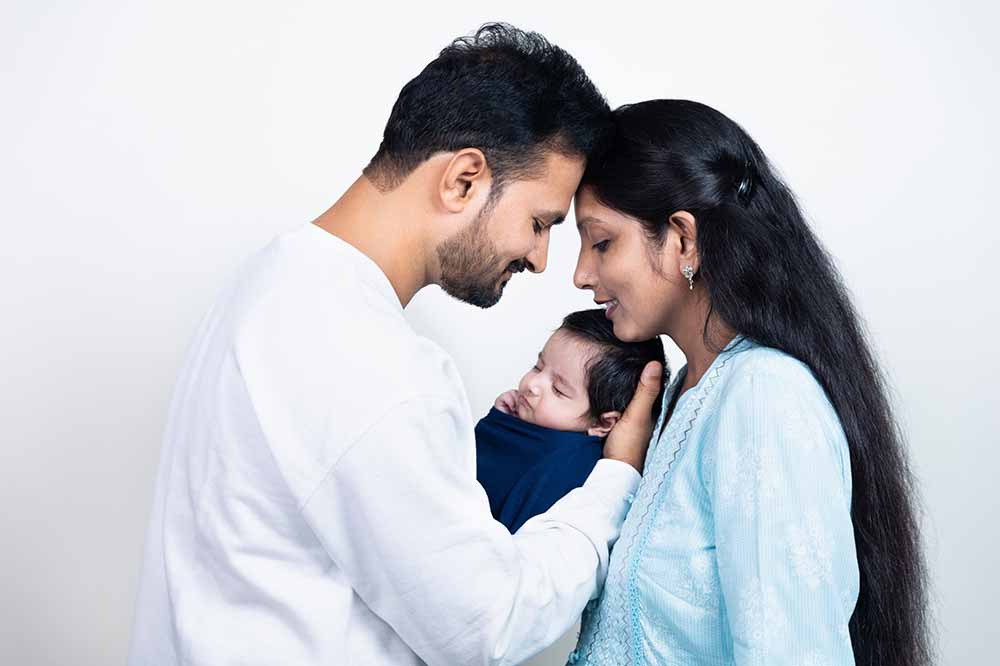On International Women’s Day in 2017, Anne Hathaway gave a speech at the United Nations in her capacity as Goodwill Ambassador. She called on companies and countries worldwide to offer paid paternal leave and implement parental policies that included both men and women.
“The assumption and common practice that women and girls look after the home and the family is a stubborn and very real stereotype that not only discriminates against women but limits men’s participation and connection within the family and society,” she said. “We need to redefine and destigmatise men’s roles as caregivers. In other words, in order to liberate women, we need to liberate men… Why do we continue to undervalue fathers and overburden mothers? In the modern world, some families have two daddies. How does maternity leave serve them?”
Let’s face it. No one can take three unpaid months off work. New baby or not, the load at your workplace isn’t going to magically disappear. You’re going to have to deal with it, even with the overwhelming responsibilities of being a new parent.
“In India, a maximum of 26 weeks (six months) is provided towards paid maternity leave,” says Diksha Khanna, a Noida-based recruiting agent. “Fathers, on the other hand, get a maximum of only 15 days of paid leave, which must be used within six months of becoming a parent. This has been made mandatory only in Government establishments, where the man has worked for at least 80 days in the year immediately preceding the birth of the child. Both biological and adoptive fathers are eligible to take this leave. There is no formal policy in place for private players, who are free to grant paternity leave at their discretion.”
Diksha says that this kind of skewed leave places an unfair burden on mothers as primary caregivers. “It also then becomes a practice and habit that goes on through childhood by default, even after mothers go back to work. The idea of fathers taking on equal roles in childcare is definitely not a new one, but how are families expected to cope with the loss of income? Companies that offer paternity leave and/or flexibility in working hours or work schedules for new fathers would actually help create employees who are happier and have an improved work-life balance. It also demonstrates a company’s willingness to embrace gender equity in the true sense, offering male employees the opportunity to enter parenting spaces that have traditionally been seen as the female domain.”

Where does India stand on the paternity leave front? Ironically, we are doing better than the abysmal global average. According to statistics from 2021 by The World Bank, the average length is alarmingly low at just seven days. However, this already ridiculous number is more than double of what it was a decade prior, in 2011, when the global average was just three days!
Iceland recently implemented the longest paternity leave policy, with six months allotted to the father and six months allotted to the mother. Together, they have one year of parental leave, and are also able to transfer up to one month of leave to the other parent, splitting it up into seven months and five months, if they wish. Sweden has a somewhat unique approach. They offer both parents combined access to 480 days of shared leave with partial pay, usually around 80 per cent of the salary. This way, parents can split up the leave in whichever way suits them. In fact, research in Sweden has concluded that each additional month of paternity leave taken can increase a mother’s earnings by 6.7 per cent.
Countries in the Far East follow a bizarre trend though – men simply don’t make use of the policies that are implemented. For instance, in 2017 in Japan, only one in 20 men availed the mandated fully-paid six to 12-month paternity leave, as per the Organization for Economic Co-operation and Development (OECD). In South Korea, for every six people who take parental leave, only one is a father – five are mothers.
“A lot of men feel that taking fully paid paternity leave for three or six months would cause an ‘out of sight, out of mind’ syndrome,” says Divya Bharti Umashankar, a career counsellor and life coach. “Women have been conditioned to make peace with the pauses and breaks in their careers and justify them as work-life balance, family commitments, and so on. Men, on the other hand, feel that it is a risky proposition and could cause setbacks, with other, lesser deserving candidates getting ahead simply by virtue of being present. Although their jobs tend to be secure, their career trajectories may not remain so.”
She adds, “Men who take paternity leave while their wives go to work for six months are also afraid of being perceived as soft. Weirdly enough, I’ve seen them get a lot of credit for just staying home and looking after a child that is their own. I don’t see mothers getting this kind of praise and applause for doing the exact same thing. Except for nursing, fathers can and should be able to do everything else that mothers are expected to.”
Eventually, it boils down to this. Two parents, each with their individual career, bring a child into this world. It only stands to reason then, that they take on equal responsibility for that child, in terms of time and effort. This levels the playing field at work for women reduces their workload at home, improves their mental health, and accelerates the course of their careers.
The battle for paternity leave isn’t just about giving fathers paid time off work. It is about empowering mothers and setting the tone for equitable families and workplaces.